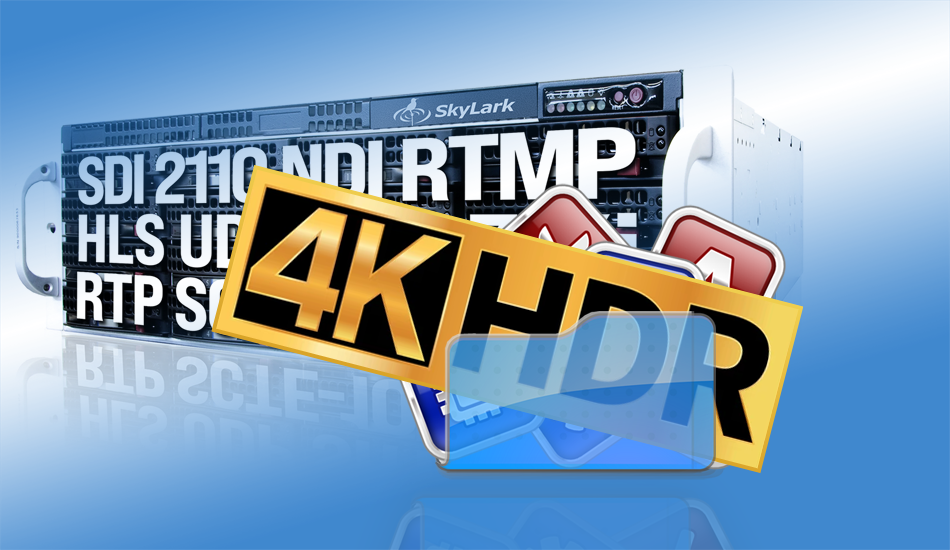The SL NEO line of products features the following:
- High resolution video: 3840×2160 pixels;
- Support for all range of frame rates: 24/25/29.97/50/59.94/60 FPS. Since UHDTV uses progressive scanning, it is possible to achieve the usual «smoothness» of the image, similar to «interlaced» systems, with frequency values of 50 Hz.
- Support of the ITU-R recommendations for the color space: BT709, BT2020 with a wide color gamut (WCG) during recording, file import and playback;
- Dynamic conversion between BT709 (SDR) and BT2020 in combination with PQ and HLG formats (HDR) in capture, recording, playback, conversion, preview;
- Up/cross — conversions for ingest and import: upscaling HD > UHD and frame rate conversions, with interline and interframe interpolation;
- Input/output interfaces/protocols: 6/12G SDI, 3x4G SDI, H.264/265 or SMPTE ST2022−6, SMPTE ST2110 over IP, UDP/RTP/RTSP/RTMP, HDMI 2.0 with PQ and HLG metadata generation;
- Supports SMPTE ST2022−7, SMPTE ST2110 using Nvidia NIC cards with 25/50/100G interfaces. The 25G interface provides I/O support for 2 channels of UHDp60;
- Support for IP encoding is implemented using the power of the CPU or using the NVIDIA GPU. H.264 and H.265 YUV 4:2:0 formats.
Features of the SL NEO platform are actual in generation of UHD programs when mixed content is used, when in HDR-program the source content is partially present in SDR format and vice versa:
- Capturing SDR signals from Live sources and on-line conversion to HDR when forming the HDR output program;
- Import of files with BT709 (SDR) color space and automatic conversion to HDR;
- Generation of proxy-copies when capturing, importing files, real-time preview of mixed SDR/HDR content on network workplaces with SDR monitors;
- Graphics design for UHDTV programs in both SDR and HDR modes. Editing, previewing graphical compositions on networked workstations;
- When making UHDTV SDR programs in cases where the content is partially present in HDR, HDR-SDR conversions are performed during capture and file import.
If you have questions or need more detailed information, please contact us
Send a message or request
News
